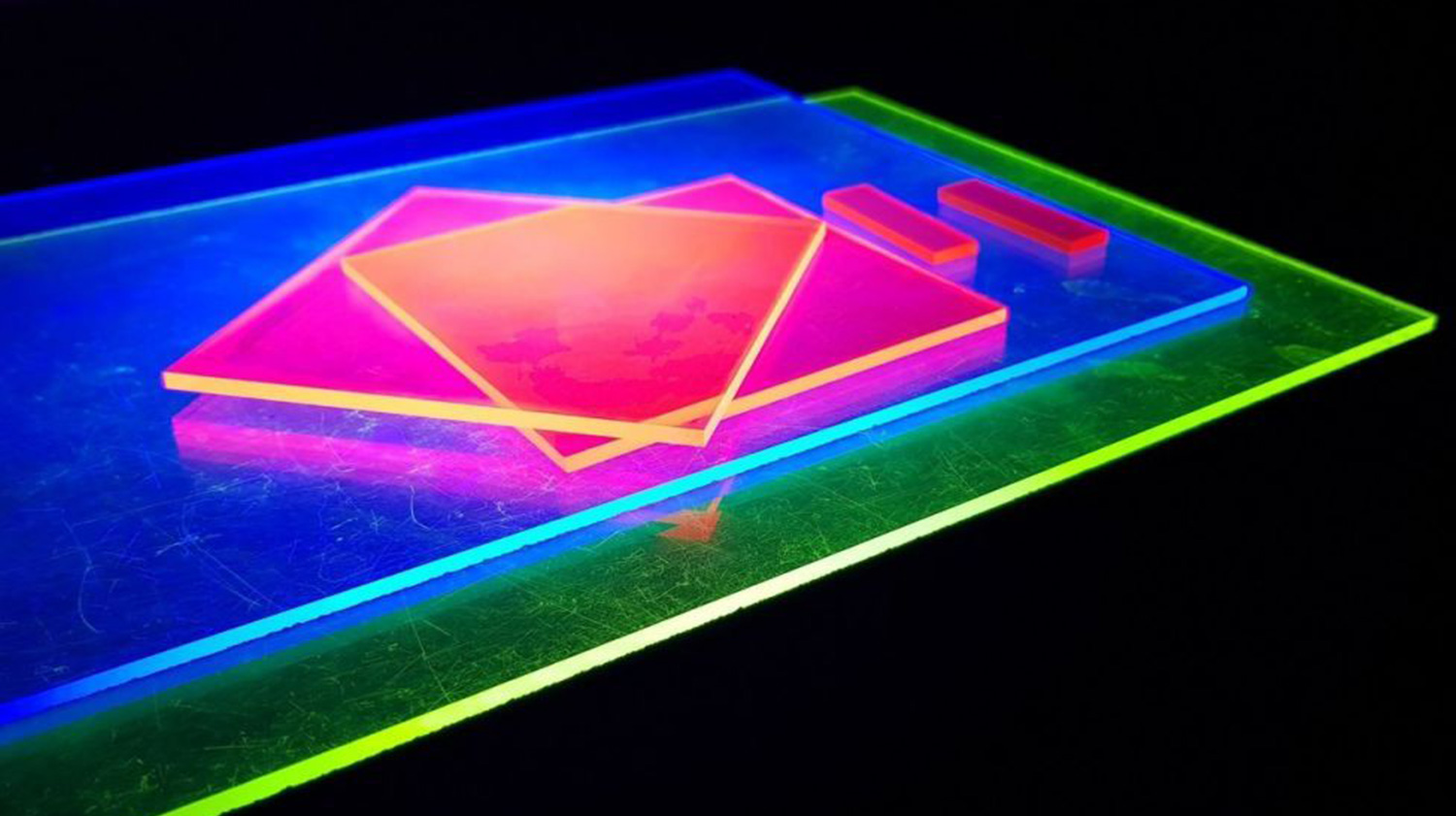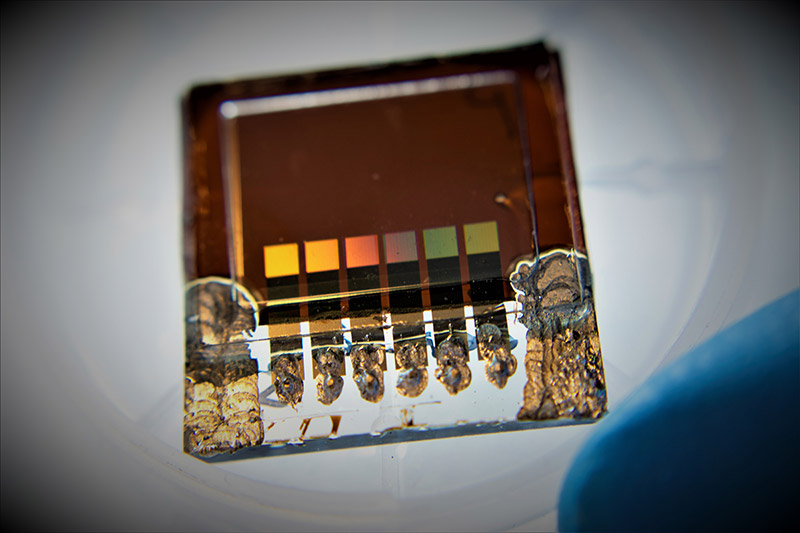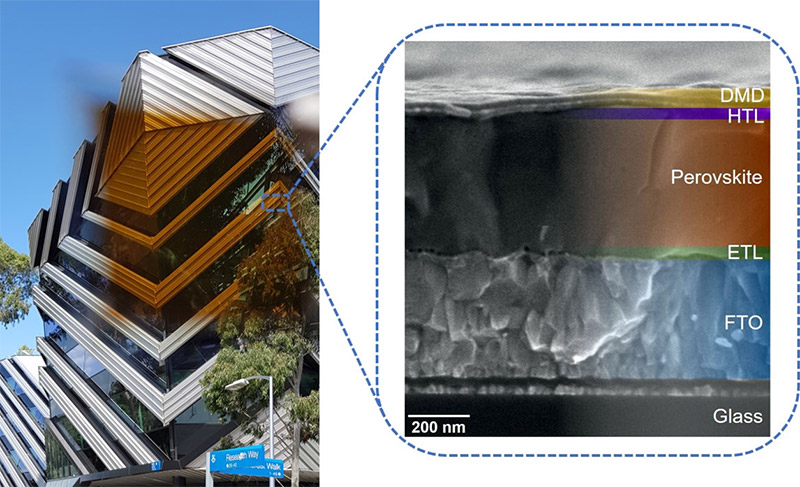

Platform Leader: Jacek Jasieniak
Deputy Platform Leader: Udo Bach
This platform aims to harness controlled light-matter interactions of new and emerging materials within solution-processed solar cell architectures that can go beyond silicon in efficiency or utility.
The platform’s aims are being achieved by developing new materials and device architectures through advanced theoretical and synthetic combinatorial screening approaches, advanced device simulation and characterisation methods. These are being applied to existing solar cell technologies, such as perovskites and copper zinc tin sulfide (CZTS), in order to understand the origin of and, ideally, enhance their efficiencies. They are also being applied to a number of novel solar cell materials and device architectures that provide unique advantages compared to traditional silicon-based devices, including those based on back-contact perovskites, semi-transparent, bi-perovskite tandems and near-infrared (NIR) photovoltaics. A key aspect of this work is to harness the advantages of solution-processing for developing high efficiency and low-cost printed solar cells. However, the printing of multi-layered stacks of materials is challenging, particularly when considering the control needed for high-efficiency devices. We focus on understanding the printing processes through insights attained from advanced simulations, that are coupled to ink engineering and printing efforts in order to accelerate the translation of specific materials, such as perovskites, towards larger-scale printing trials and devices at CSIRO.
Researchers
New Industry Partners
Exciton Science Research Groups
| Name | Node |
|---|---|
| Jacek Jasieniak | Monash |
| Udo Bach | Monash |
| Salvy Russo | RMIT |
| Asaph Widmer-Cooper | USyd |
| Paul Mulvaney | UniMelb |
| Girish Lakhwani | USyd |
| Name | Node |
|---|---|
| Sonia Ruiz Raga | Monash |
| Kevin Rietwyk | Monash |
| David McMeekin | Monash |
| Sebastian Fürer | Monash |
| Tian Zhang | Monash |
| Nirmal Peiris | Monash |
| Naresh Chandrasekaran | Monash |
| Juen-Eun Kim | Monash |
| Jaechoul Yu | Monash |
| Stefano Bernardi | Sydney |
| Wenxin Mao | Monash |
| Xiongfeng Lin | Monash |
| Sri Matta | RMIT |
| Nastaran Meftahi | RMIT |
| Name | Node | Student type |
|---|---|---|
| Qingdong Lin | Monash | PhD |
| Adam Surmiak | Monash | PhD |
| Qianying Guo | Monash | PhD |
| Dorota Bacal | Monash | PhD |
| Boer Tan | Monash | PhD |
| Sarah Eskandarian | Monash | PhD |
| Boya Zhao | Monash | PhD |
| Siqi Deng | Monash | PhD |
| Jize Lin | Monash | PhD |
| Jingsong Sun | Monash | PhD |
| Bin Li | Monash | PhD |
| Chun Kiu Ng | Monash | PhD |
| Monika Michalska | Monash | PhD |
| Yixiong Ji | UoM | PhD |
| Debora Monego | USYD | PhD |
| Madhuranga Rathnayake | USYD | PhD |
| Lara Gillan | UNSW | PhD |
| Yanchen Zhou | USYD | MPhil |
| Xuying Li | USYD | MPhil |
Developing new materials for use as charge-transport and interfacial modification layers with microstructurally and compositionally controlled perovskites. Also focused on the development of semi-transparent and fully-printable perovskite solar cells. Strong collaborations across these projects exist with CSIRO, RMIT and UniMelb.
Developing combinatorial approaches to new materials discovery and their application in different solar cell device architectures. Key current activities include the development of an automated materials discovery platform, lead-free perovskites, back-contact solar cell devices and tandem perovskite devices. These projects are collaboratively performed with CSIRO, UniMelb and USyd.
Developing colloidal materials for the fabrication of low-cost solution-processed thin film solar cells. Current efforts are focussed on the fabrication of CZTS solar cells in collaboration with Monash and CSIRO.
Developing large-scale materials screening processes in-silico to identify suitable materials for use within solar cells. Also carrying out detailed density functional calculations to probe the specific structural, optical and electronic properties of potential solar cell materials and their interfaces. These activities are being carried out collaboratively with Monash.
Studying the photophysics of organic photovoltaics to understand the fundamental nature of their charge-separation and transport properties. Collaborative works around device simulation are currently being investigated with Monash.
Developing and utilising atomistic and mesoscale simulations to understand the formation mechanisms of perovskites in solution and their structural evolution in thin films. These works are done in collaboration with Monash and UniMelb.
CSR Viridian is Australia’s largest glass manufacturer. In partnership with CSIRO, we are working with them on the development of semi-transparent solar cells.
RayGen is a hybrid energy systems developer located in Australia. We are working with them on understanding failure mechanisms in tandem solar cell modules.
Wuhan University
Nanjing University
Chongqing Institute of Green Technology – As part of the Australia-China Science and Research Fund program on graphene materials.
Significant research efforts have been placed in 2019 on the development of structurally and compositionally controlled perovskite solar cell devices. These have investigated both one step and two step deposition approaches of hybrid and all-inorganic candidates. Critical to these investigations is the recognition that new solar cell materials and device configurations is a time-consuming process. As such, to enhance the productivity across this Platform, this year we have completely re-developed our solar cell device configuration layout to allow four devices to be fabricated on one substrate, while also allowing 16 solar cells to be characterised simultaneously using simple current-voltage analysis and maximum power-point tracking.
These advances have enabled rapid exploration of numerous factors associated with perovskite solar cells in both standard and inverted configurations to achieve devices with an efficiency approaching 21%. As part of these efforts, we have assessed myriad solution-processed electron and hole transport nanoparticle-based layers using synthetic methods such as microwave, hot-injection and ball milling, including NiO, TiO2, SnO2 and MoO3. Of these, SnO2 has emerged as a standout for electron transport, while the development of a suitable hole-transport material that is stable, scalable, and exhibits the appropriate electrical properties has remained a challenge. In conjunction, a focus on developing engineered interfaces between the perovskite and the charge transport layers has also been under way. As one example, the exploration of 2D perovskite capping layers has demonstrated their ability to passivate the 3D perovskite surface, whilst the introduction of F4TCNQ as a molecular additive enhanced the electrical properties of the 2D layer. Current simulation work by CI Russo from RMIT is focused on understanding the nature of the interactions between perovskites, adsorbants and secondary layer interfaces.
Critical to the realisation of perovskite solar cells in the real world, is addressing their underlying stability. Detailed optical and structural studies carried out between Monash University and the University of Melbourne coupled to mesoscale simulations at the University of Sydney have been used to provide mechanistic insights into the demixing process of mixed halide perovskite systems. This process induces structural and optical changes to a system, which can negatively impact the performance of such perovskite in time. Furthermore, the light-induced nature of these changes suggests that they may be cyclical when exposed between light and dark conditions. Therefore, for assessment of stabilities relevant to real-world adoption, such considerations need to be had, which current photovoltaic stability standards simply do not consider.
Beyond perovskites, our work in organic solar cells has been focused on photophysics of such devices. It's well known in the organic photovoltaic community that bimolecular recombination observed in contemporary bulk heterojunction devices is typically orders of magnitude lower than predicted by macroscopic Langevin Recombination model. Research from the University of Sydney showed that that this is due to recycling of charge transfer (CT) states, i.e. charge recombination leading to formation of CT states, which can dissociate again under conditions where CT dissociate rate is higher that its decay. These important insights indicate that nanoscale charge transfer states are important in understanding the nature of bimolecular recombination processes that occur in organic solar cells.
The development of novel device architectures that provide a unique benefit over silicon is a key aspect of this Platform. Towards realising this, we are working on a number of different architectures. Our continuing progress in the area of flexible perovskite solar cells with CSIRO has steadily delivered advances in scalable perovskite deposition through slot-die, carbon electrode design as a cathode and proprietary charge transport ink development to achieve fully-printed perovskite devices to increase the efficiency from less than 3 % to > 9 %. While modest compared to the leading >25% for optimised small-scale devices, this progress provides an important step forward towards realising scalable perovskite solar cell production. Moreover, this demonstrates successful translation of novel inks towards large-scale printing trials at CSIRO.
Meanwhile, our efforts in semi-transparent solar cells also continue to strengthen. Such a technology offers the potential for building integration as windows. Progress in developing a highly stable, thermally-crosslinked hole transport layer has yielded (MA,FA,Cs)Pb(Br0.15I0.85)3 perovskite-based solar cells that obviates the problematic and typically used SPIRO-OMeTAD to demonstrate record efficiencies across most average visible transmittance values (>16% at 10 AVT) and high stability (>500 hrs). Optical modelling using a transfer matrix approach has suggested that further relative gains of up to 25% can be achieved through enhanced charge transport and interfacial modification.
Finally, the development of back-contact solar cells presents an opportunity to dramatically simplify the process of solar cell fabrication by ensuring that both electrodes are co-located on the same substrate. Developing these electrode structures presents majors challenges. This year, the Monash team led by CI Bach have demonstrated non-lithographically patterned electrodes that enable back-contact perovskite solar cells with efficiencies of >6%.
Developing non-lead based solar cells with high efficiency remains a global challenge. Kesterite Cu2ZnSn(Sx,Se1-x)4 materials remain one of the most promising canidates. In 2019, Cameron Ritchie, a joint PhD student from the University of Melbourne and Monash University, developed low-temperature, aqueous synthetic methods for Cu2ZnSnS4 and Cu2ZnSnSe4 nanoparticle inks. These particles were investigated in detail, including their thermal treatment properties. Mixed particle inks yielded stoichiometric conversion into solid solutions of Cu2ZnSn(Sx,Se1-x)4 at temperatures as low as 250°C, without the need for secondary selenisation steps. Two papers emerged from this work and two patent applications. Further efforts to demonstrate functional solar cells from these materials are ongoing between UniMelb, Monash University and CSIRO. Other activities in the Centre in this area are investigating CuSbS2 and BiS2I as alternative absorber layers. Preliminary works across these has indicated that CuSbS2 exhibits structural phase issues which plague their use in solar cells, while BiS2I perovskites can yield solar cell devices with efficiencies of over 5%.
This is the largest platform in Centre. It heavily leverages other funding, predominantly ARENA to drive an ambitious workplan. Since the start of Exciton Science, activities across the platform have attracted approximately ~$5m in external research funding, with an additional approximately ~800k for infrastructure.
Collaborations across different nodes has generally remained slow and challenging. In areas that have involved modelling, this is as expected given the challenges of understanding real systems with such approaches. Continued success has been noted with the collaboration between Bach, Widmer-Cooper and Smith on the halide demixing yielding very interesting, cross-nodal activity. Another example is the continuing work between Mulvaney and Jasieniak on novel inks and solar absorbers. The latter has yielded multiple papers and patents. Recent hires by Russo will look to strengthen links between materials discovery and synthesis, which is a gap at the moment. This Platform provides the strongest links to CSIRO across the Centre. This link is essential to realise any translational efforts in the future.
The platform has gradually evolved since the Centre started to one that is focused on three work packages: Materials for Advanced Solar Cells; Device Fabrication and Characterisation; and Novel Photovoltaic Concepts – Beyond Silicon. In general, activity across these is split approximately ~1:1:0.6 in terms of alignment to current projects. The activity has changed in scope since the Centre started by having a more explicit focus on key photovoltaic devices that enable higher efficiency or new utility compared to silicon. These efforts are starting, with work package three representing a relatively new body of activity that will develop as the Centre matures. Going forward, a greater activity in NIR materials will need to emerge, as this provides clear novelty for the Centre.
The development of solar cells with microstructurally and compositionally controlled perovskite absorbing layers has constituted a major focus of this Platform to date. These efforts have resulted in important advances around charge transport layer development, interfacial modification and structural engineering, which have been harnessed to achieve world-leading efficiencies for semi-transparent and back-contact device architectures.
2020 will continue these activities, although with a deepened focus on the operational understanding of how such devices operate. This will be done by focusing on spectroscopic measurements and advanced simulation of solar cells. In unison, these will provide the ability for us to simulate a solar cell device using experimentally determined parameters, ideally in 1D and 2D, to allow for a more complete understanding of the photovoltaic properties across different absorber materials, interfaces and device architectures.
Critical to the future success of this Platform is the development of new materials, particularly lead-free and novel NIR absorber candidates. Big data materials screening approaches will be used to analyse existing databases to identify suitable candidates that meet strict optical, electrical and structural characteristics. Suitable candidates will be assessed through advanced solar cell simulations in-silico.
To translate these candidates into real-world devices, while also expanding the material scope to systems that don’t have well established parameters for screening, the Platform will establish two major materials discovery tools:
Both of these tools will have the ability to dramatically enhance the productivity of materials discover, validation of identified candidates and/or optimisation.
There is an identified lack of advanced device simulation that the Centre needs to overcome. The platform leaders will be applying for one of the centrally supported cross-node postdocoral research fellow position to bridge this gap.
Activity in NIR solar cells to date has been limited. It has been challenging to overcome visa related issues to attract students. Additionally, the major focus on perovskites has limited resource availability in this area. The Centre will seek to redeploy people from normal perovskites going forward.
The large scale of the Platform has meant that collaboration has been largely intra-nodal. The platform leaders have identified the need to develop enhanced mechanisms for cross-node collaboration, and will implement these plans in 2020.

A prototype perovskite back contact solar cell. (Courtesy: Mara Jorgovic, Monash University)

Photograph of a completed semi-transparent device in front of the New Horizon building at Monash University. The cross-sectional structure of the device as taken by a scanning electron microscope is shown in the inset. (Courtesy: Jae Choul Yu, Monash University)